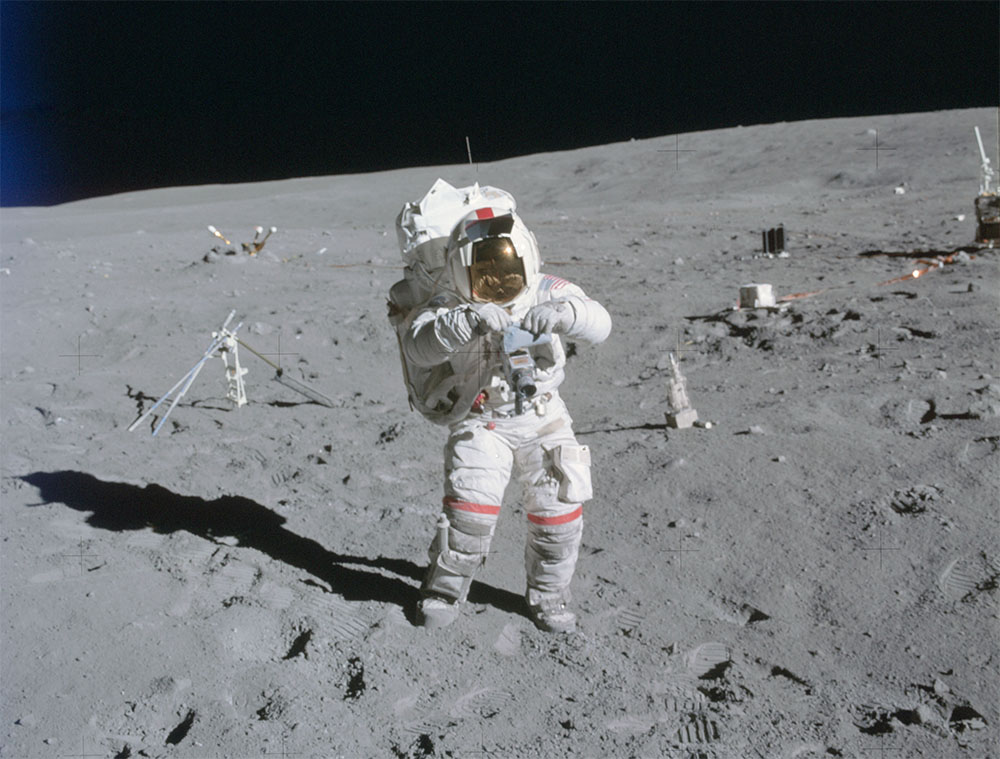The landing on the Moon on July 20, 1969, is still considered one of the most significant accomplishments in human history.
Despite substantial evidence confirming it happened, some still believe it was fabricated, promoting various conspiracy theories.
One of the theorists shared their beliefs with Aldrin, which led to a tense exchange.

The incident has since gone viral, with online comments pouring in. One person said, “I can watch this all day! High five Buzz.”
Another commented, “This is how studs handle these idiots that have nothing else to do.”
Adding humor, someone else posted, “One small punch for Buzz, one big punch for mankind.”
During NASA’s Apollo 11 mission, Neil Armstrong and Buzz Aldrin were the first people to walk on the Moon.
This monumental event was watched by millions worldwide and marked a pivotal moment in the space race between the United States and the Soviet Union.
However, skepticism began shortly after, with one of the first and most influential skeptics being Bill Kaysing, a former employee at Rocketdyne, which played a significant role in the Apollo program.

In his 1976 self-published book, ‘We Never Went to the Moon: America’s Thirty Billion Dollar Swindle,’ Bill Kaysing claimed that NASA staged the Moon landing to showcase U.S. space supremacy without the actual risks and costs of going to space.
Although Kaysing’s assertions lacked solid evidence, they paved the way for numerous Moon landing conspiracy theories.
These theories have grown, especially with the rise of the internet, which has facilitated the quick spread of false information.
Conspiracy theorists often highlight supposed inconsistencies in the photos and videos from the Moon landing.
For example, they point to the American flag, which appears to wave as though in a breeze, despite there being no atmosphere on the Moon.
The National Space Center explains that the flag only appears to move because the astronauts were rotating the pole to which it was attached into the lunar surface, which disturbed the flag.
It remained in that bent position due to the Moon’s weak gravitational pull.

Another common point of contention is the lack of visible stars in the lunar photographs.
Skeptics argue that the stars should be visible, but in reality, the camera settings used on the Moon did not allow stars to be captured due to the exposure settings needed for daylight photography.
Additionally, questions about the directions of shadows in the lunar photos persist, with skeptics noting that they appear to go in different directions despite the Sun being the only light source.
Experts explain that the uneven lunar surface can cause shadows to stretch and appear at various angles, leading to these optical discrepancies.

The well-known science show MythBusters addressed the Moon landing debate in 2008, as reported by Space.com.
They used a small-scale model featuring uneven lunar-like terrain, miniature astronauts, and artificial sunlight to show that shadows on the Moon’s surface could appear non-parallel naturally.
This demonstration challenged the skeptics’ assertion that such shadows in NASA’s images indicated artificial lighting, suggesting a studio setup.
The broader scientific community strongly disagrees with the Moon landing conspiracy theories, pointing to substantial evidence that the landings were genuine.
Numerous former NASA staff, engineers, and astronauts have consistently confirmed the landings’ authenticity.
Furthermore, the Soviets, who were keen observers of the U.S. space efforts during the Cold War, never challenged the validity of the Moon landings.
Considering the fierce competition between the two superpowers, it would have been unlikely for them to stay quiet had the landings been staged.
The continued belief in Moon landing conspiracies is often attributed to psychological factors that foster conspiracy beliefs.
As Scientific American outlines, conspiracy theories can offer individuals a sense of control and comprehension in a complicated and unpredictable world.

One such belief in a Moon landing conspiracy led to a notable incident involving Aldrin outside a Beverly Hills hotel.
On September 9, 2002, Bart Sibrel, a prominent advocate of the Moon landing hoax theory, confronted the famous astronaut with a camera crew, urging the 72-year-old to swear on a Bible that he had walked on the Moon.
Aldrin, clearly uncomfortable, repeatedly asked Sibrel to leave him alone.
Despite this, Sibrel persisted, accusing Aldrin of being a ‘coward’ and a ‘liar,’ which eventually provoked Aldrin to react strongly.

The incident where the former astronaut threw a punch that connected with Sibrel’s jaw was caught on camera. Sibrel was visibly shocked and staggered back.
The event quickly captured global attention, and many people empathized with Aldrin, understanding his reaction under the circumstances.
History.com reports that the Beverly Hills police looked into the scuffle but ultimately decided against charging Aldrin, identifying Sibrel as the provocateur.
Since this incident, famously known as the ‘punch heard around the world,’ Aldrin has remained an active proponent of space exploration and education in science.
During the 50th anniversary of the Moon landing in 2019, Fox News asked Aldrin about his thoughts on those who question the legitimacy of the moon landing.
Aldrin responded, “I don’t pay any attention to them, really. They’re out for themselves to make a name.”



